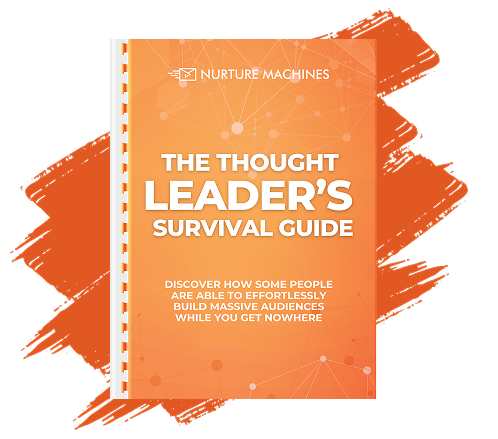Creating a high-converting sales funnel doesn’t have to mean high costs. For businesses operating within tight budgets, the key lies in building a lean, well-structured funnel that emphasizes efficiency, trust, and long-term customer relationships. This approach uses automation, personalization, and free digital tools to guide prospects from initial awareness to conversion. By focusing on strategic planning and audience-specific messaging, even modest teams can drive meaningful growth without breaking the bank.
Key Takeaways
- A lean sales funnel reduces costs by prioritizing organic outreach, automation, and repurposed content.
- Clear audience targeting and low-cost tools like CRMs and email platforms ensure each funnel stage runs smoothly.
- Personalization and cultural relevance help build trust across the customer journey, especially when ad budgets are tight.
- Strategic planning and free analytics tools support continuous funnel refinement.
- Even with minimal resources, effective sales funnels can drive conversions and foster lasting customer relationships.
Understanding Core Principles of Effective Sales Funnels for Budget Constraints

A cost-effective sales funnel maps the customer journey while keeping expenses minimal. This approach focuses on awareness, interest, and conversion using automation tools and organic strategies instead of expensive ads. For businesses working with limited budgets, mastering this funnel means prioritizing efficiency, trust-building, and long-term growth. By leveraging free tools and tailored messaging, even small teams can make a meaningful impact. The result is a streamlined funnel that optimizes acquisition and retention with thoughtful planning.
Defining a Sales Funnel Tailored to Minimal Spending
A lean sales funnel starts by clearly identifying a niche audience and attracting them through content like blogs, social media posts, and search engine optimization. The goal is to use free traffic sources effectively and turn them into leads using landing pages, forms, and gated assets. Project management software helps organize these stages without inflating costs. Each interaction is tracked and evaluated using lightweight tools, reducing overhead while ensuring consistent follow-through and nurturing.
Why Resource-Limited Funnels Demand a Strategic Focus
Budget constraints require sharp decision-making and strategic vision. Instead of costly ads, businesses lean on email marketing, content delivery, and stakeholder insights to build brand relationships. Each step is optimized to reflect customer understanding and align with cultural nuances of the audience. Automation bridges the gap between engagement and conversion, enabling consistent touchpoints. Strategic funnels foster a growth mindset while preserving budget integrity.
Essential Stages of a Cost-Conscious Sales Pipeline
A streamlined funnel includes four stages—Awareness, Interest, Decision, and Action—all supported by automation tools. Awareness relies on free outreach channels, Interest nurtures with tailored email flows, Decision presents strong offers, and Action focuses on easy, trust-based conversions. Tools like free CRMs and email platforms allow each stage to be managed efficiently. These stages reflect an organized project management approach, ensuring no lead is neglected.
Building the Awareness Stage for Broad Impact on a Shoestring Budget

The awareness stage lays the foundation for lead generation, particularly when working within budget limitations. This phase aims to capture attention through organic channels, compelling content, and consistent outreach. By aligning efforts with free resources and automation tools, businesses build trust early without heavy ad spend. Awareness nurtured with strategic messaging helps guide audiences deeper into the funnel. Leveraging insights from analytics ensures these efforts are always improving and stay targeted. Done well, this stage sets the tone for cost-effective acquisition and growth.
Producing Engaging Content With Scant Financial Resources
Creating content that connects doesn’t require expensive tools—just clarity and consistency. Focus on crafting blogs, visuals, or short-form videos around the specific needs and goals of your target audience. Project management software helps plan these assets for regular posting and cross-channel repurposing. Free tools like design templates and keyword planners ensure quality and discoverability without spending. The content should address common pain points and introduce helpful ideas that build trust. This method sustains visibility and reinforces credibility across multiple touchpoints.
Using Organic Social Platforms for Economic Visibility
Social media remains a key player in brand awareness for businesses on a tight budget. Platforms like Instagram or LinkedIn allow brands to share updates, start conversations, and demonstrate value—all for free. Scheduling tools help maintain consistency while analytics guide improvements. Sharing customer-focused insights and interacting with niche communities drives engagement over time. These platforms also help businesses listen to their audience, adapting content to reflect evolving needs. The end result is a network of prospects nurtured through accessible, authentic interaction.
Applying Foundational SEO for No-Cost Traffic Attraction
Search engine optimization is a long-term asset that keeps delivering without monthly ad fees. Optimizing website content with targeted keywords, relevant meta tags, and fast-loading mobile pages helps attract the right traffic. Internal linking and structured formatting improve navigation and user experience. Project tracking tools help monitor progress and align SEO tasks with funnel goals. Basic analytics from search engines reveal how prospects engage, helping teams fine-tune future efforts. This ongoing, cost-free visibility compounds over time, feeding your sales funnel efficiently.
Nurturing Potential Clients Efficiently Within Tight Financial Boundaries

Once leads enter your funnel, nurturing them effectively is essential for conversions, especially when working with limited resources. This stage is all about providing value over time through relevant, personalized content and communication. Rather than expensive campaigns, it relies on automation, consistency, and a strong understanding of buyer behavior. With the right tools, even lean teams can maintain engagement and build meaningful relationships. Smart segmentation and free CRM systems support tailored communication that resonates. This approach deepens trust and keeps prospects moving forward.
Growing an Email Subscriber Base Without Paid Advertising
Building an email list on a budget starts with offering something valuable in exchange for a subscriber’s contact. Think downloadable checklists, how-to guides, or exclusive insights delivered via a simple opt-in form. These assets can be promoted organically through social posts, blogs, and referral prompts. Use project management tools to coordinate campaigns and ensure delivery stays on track. The focus should be on solving a real problem for the lead, not just pushing offers. With consistency, your list becomes a core engagement asset for the long term.
Creating Compelling Automated Email Campaigns Economically
Automation ensures your messages go out at the right time without needing daily manual effort. Free or low-cost email tools allow you to design sequences based on user actions or funnel stages. Welcome series, educational emails, and timely reminders can all be set up to build rapport gradually. Stakeholder insights and analytics help shape messaging for each segment, enhancing impact. Every email should offer value, guide action, or reinforce your brand’s expertise. This keeps leads engaged until they’re ready to convert, without adding operational strain.
Providing High-Value Lead Magnets Created Inexpensively
Lead magnets convert curious visitors into committed subscribers by offering immediate, useful solutions. These could be how-to PDFs, quick-start kits, or short videos, produced using existing knowledge and free tools like Canva. The key is to ensure the magnet addresses a pain point relevant to your ideal audience. Delivery can be automated for efficiency and tracked to measure effectiveness. When combined with strong follow-up content, these magnets build trust and establish credibility. Over time, they help nurture your pipeline without heavy investments in advertising.
Converting Leads to Sales Through Prudent, Effective Sales Funnel Methods

Conversion is the final and most critical step in the funnel, where nurtured leads turn into paying customers. When operating under budget constraints, businesses must make each conversion opportunity count. This involves clear messaging, low-friction buying paths, and offers that feel personalized yet cost-effective. Understanding buyer intent and streamlining decisions are central to success. Free analytics tools and simplified workflows enable teams to track what’s working and adjust quickly. Every conversion tactic should balance efficiency, clarity, and trust to support long-term revenue.
Constructing Simple, Potent Landing Pages for Free
Landing pages serve as the key turning point where leads act—or bounce. Use free builders with drag-and-drop interfaces to create focused, mobile-friendly pages. Include a clear headline, supporting benefits, and a strong call-to-action that reflects customer needs. Visual hierarchy should guide attention while removing unnecessary distractions. Integrate basic analytics to see how users behave and improve the layout over time. Small tweaks—like fewer form fields or better button placement—can make a big impact. When designed right, these pages drive action without design expenses.
Writing Convincing Sales Narratives Without Professional Fees
A strong sales narrative bridges the gap between a lead’s problem and your solution. Use simple language to outline what makes your offer unique, focusing on benefits over features. Ground the narrative in customer challenges and explain how you address them. With support from stakeholder feedback or FAQs, you can refine messaging that speaks to your audience’s needs. Visual aids like infographics or icons enhance clarity and break down complex points. When aligned with funnel goals, the right story builds trust and compels action. No copywriting agency required.
Structuring Appealing Offers Suited to Budgetary Restrictions
Irresistible offers don’t have to be expensive to create impact. Whether it’s a free trial, bundle discount, or bonus service, the key is perceived value. Use project management software to coordinate testing of different offers across segments. Keep the messaging clear and use visuals or bullet points to reduce hesitation. Monitor conversions with free tools to identify which incentives work best. This allows you to scale proven offers without added costs. Effective offers reduce friction and give prospects a clear reason to act now.
Frequently Asked Questions
What is a cost-conscious sales funnel?
A cost-conscious sales funnel is a marketing framework designed to acquire and nurture leads while minimizing expenses. It emphasizes organic strategies, free tools, and low-cost automation to guide prospects through stages—from awareness to conversion—with measurable ROI. This approach relies heavily on strategic planning, clear goals, and continuous performance tracking to ensure each marketing dollar is maximized, making it ideal for startups and budget-constrained businesses.
How can I build a winning landing page with no budget?
Building a high-converting landing page on a budget involves using free website builders and drag-and-drop templates. Focus on clear messaging, strong calls-to-action, and minimal design elements to reduce distractions. Additionally, incorporating customer testimonials and social proof can boost credibility without significant costs. Testing variations with free A/B tools further refines the page while keeping expenses low.
What free tools can help monitor my sales funnel performance effectively?
Free tools such as Google Analytics, Google Search Console, and Hotjar provide valuable insights into user behavior and funnel performance. These platforms track metrics like bounce rates, conversion rates, and user flow, helping you identify bottlenecks and opportunities for improvement. Combined with free CRM systems and email marketing services, these tools enable data-driven optimization without extra financial burden.
How does organic social media support the awareness stage on a limited budget?
Organic social media drives awareness by leveraging platforms like Facebook, Instagram, Twitter, and LinkedIn to post high-quality, engaging content without paid ads. Regular interaction, content repurposing, and community engagement build natural brand visibility. Free scheduling and analytics tools ensure your content consistently reaches a broad audience, laying a solid foundation for further lead nurturing.
What are practical ways to nurture leads without spending much money?
Nurturing leads on a limited budget involves strategies like growing an organic email subscriber base with valuable lead magnets, deploying automated but cost-effective email campaigns, and segmenting your audience using free CRM platforms. Additional tactics, such as using free retargeting tools and personalized content, help maintain engagement and build relationships without significant financial investment.
Conclusion
A cost-effective sales funnel isn’t just about cutting expenses—it’s about being intentional with every step and tool used. By focusing on free, scalable platforms and data-backed decisions, businesses can still deliver personalized, engaging experiences to every prospect. Leveraging automation helps maintain consistent touchpoints, while thoughtful content builds trust across the buyer journey.
The real strength of a resource-limited funnel lies in its flexibility and clarity—it forces marketers to sharpen their messaging, rely on meaningful interactions, and streamline processes that drive measurable results. When done right, this kind of funnel does more than save money; it sets the stage for sustainable growth, strong stakeholder relationships, and long-term customer loyalty.






